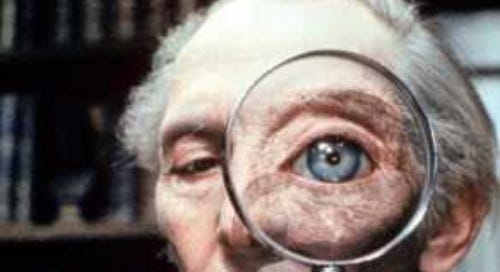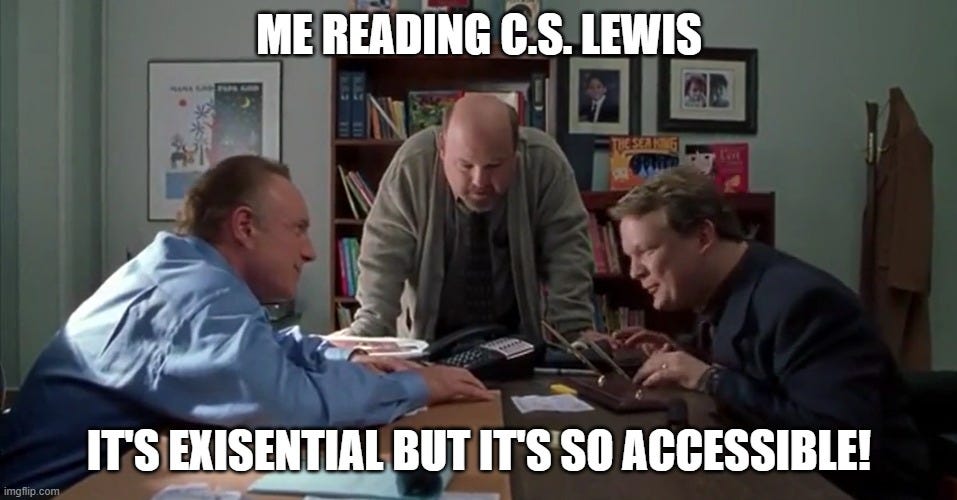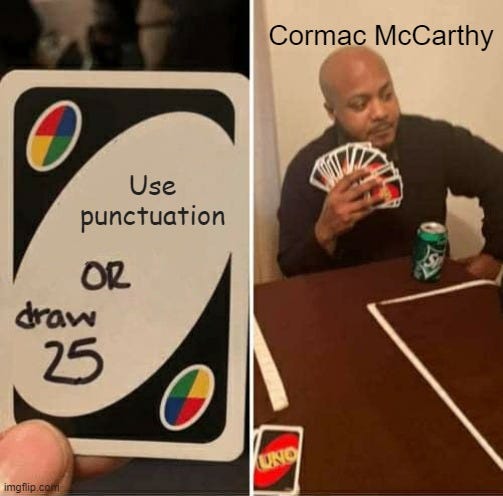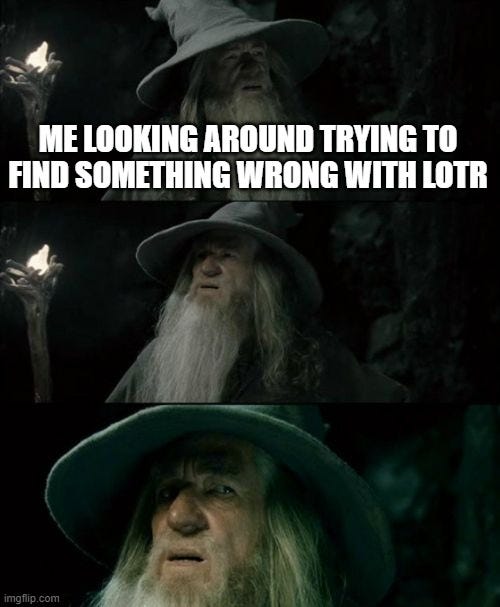Before I entered my 20s I seldom stopped to think about my writing style. Sitting down to write, I would put pencil to paper (or fingers to keyboard) and just let it flow. After reading Cormac McCarthy late in my teen years I began to hyper-focus—perhaps to an unhelpful extent—on authors’ literary techniques and styles. First I will share the authors who have most had an effect on my own technique as a writer and rank them by ascending influence. Along the way, consider, if you will: how intentional, on the spectrum between effortless and painstaking, should a writer be when emulating another’s style?
I don’t know if it’s just me, if it’s something all writers, or something anyone who really loves reading does—but I go into English teacher mode whenever I read. I start assessing the quality of the writer’s writing to the extent that I get pulled out of the story whenever the author tells rather than shows, waxes didactic, or takes the plot or character arc in a predictable direction. I think the first book I remember “grading” in my head was Maze Runner. To avoid denigrating other authors’ work in this Substack, I’ll leave it at that. But even books I enjoy and authors I admire aren’t immune to my scrutinizing eye. Maybe some of this impulse is due to pride on my part. Actually, I’m positive that has something to do with it. But mostly I want to figure out what to emulate in a writer’s style and want I want to avoid in my own writing.
I’ve also found that certain writers inspire me in different ways. I like to read certain authors at certain times of year, or during certain phases of a writing project. When I return to a project I haven’t touched in a while, the qualities of my work remind me which book I was reading at the time. What follows are the authors who have most influenced my writing, with reflections on the nature of their inspiration, the phase of writing they most behoove, their most inspiring work (to me), and any caveats I’ve found by leaning too far under their sway.
P.G. Wodehouse
Influence: Pelham Grenville’s reliance on recurring jokes and humorous situations refutes the claim that a joke is only funny the first time. Au contraire. It gets better every time you hear it! To Wodehouse, and his character Bertie Wooster in particular, I owe a fondness for witty dialogue and absurdity resulting from characters wishing to preserve social conventions or relationships, even those that mean little to them. Most of Wodehouse’s characters are good or likeable, or likeable ipso facto their despicability. The reader can count on a smile on his face and everything coming out right in the end.1 I don’t always write stories that end that way, but I do have a soft heart for them. No one wraps things up tidily like Sir Pelham.
Beware: Much of Wodehouse’s charm comes from his predictability. His stories follow one of two patterns: Guy loves girl. Guy doesn’t know how to win girl. Guy seeks expertise. Ploy to win girl fails miserably, leading to estrangement. Unlikely happenstance then leads to their engagement anyway. Guy and girl end happily. OR: Guy dislikes girl. Misunderstanding leads to their engagement. Ploy to get out of engagement; fails miserably. Unlikely happenstance severs engagement. Guy ends happy (and often girl ends happily engaged to someone else). But not every author wants to or should be so predictable. Also, many of his characters are simply funnily-named copies of one another, which can lead the reader to confusion. For these reasons I would advise against binge-reading Wodehouse, but enjoy him as an aperitif or palate-cleanser before or between courses.
Phase: Writing dialogue and plot twists.
Most inspiring work: Right Ho, Jeeves
Lloyd Alexander
Influence: Alexander’s Prydain Chronicles are stuffed with men, women, and creatures characterized by their speech patterns, likes and dislikes, and varying relationship dynamics. They are some of the best kids’ books I know, period. They are unique in that Taran, our protagonist, begins a not particularly likeable person. He’s whiny, entitled, rash, and has major “main character” energy. But then the author takes him lovingly in hand and balances him out with both the lesson that he’s not great, and the lesson that he can reach the greatness he longs for if he works hard and sacrifices a lot of what he holds dear. Taran has influenced my book Rolam’s Map more than any other character in fiction. I doff my cap to you, Mr Alexander.
Beware: Whether a bug or a feature, Prydain books move at breakneck speed. In The Book of Three, we hear about the story’s main bad guy, the fearsome Horned King, and Prydain’s archetypal heroic figure, Prince Gwydion. And then Taran runs into both these characters within the first 20 or so pages. Having the heroes quest all over Prydain and meet a dozen of its main players in just the first book certainly exposes us to Lloyd’s fantasized version of Wales very quickly, but I believe readers can handle, and even prefer, delayed gratification. Also, everyone Taran talks to is smarter than himself. That in itself isn’t a bad thing, since Taran starts off pretty dumb, but everyone he encounters drops bare-faced pearls of wisdom like the turf is made of soapboxes. I know this is a kids’ book, but kids can handle subtlety. I hope to make the lessons Rolam (my young hero) learns count by only making the most important ones so overt.
Phase: Developing characters’ speech, relationships, and motives.
Most inspiring work: Taran Wanderer
5. Flannery O’Connor
Influence: I’ve always been drawn to characters who wrestle with God. There is more hope in stories where characters struggle with faith than stories where faith comes easily, for hope is most notable when the night is darkest. O’Connor’s broken, prejudiced, savage, ugly characters defy the lessons budding writers learn about crafting protagonists. We’re told to make characters likeable and to expose their motives, passions, likes/dislikes, and moods through varied speech. Flannery, on the other hand, makes her characters repeat their same phrases and patterns from beginning to end of their respective stories. That approach teaches us about the biased thought patterns they tread and retread, the vapidity of their vices on display through their repetitive utterances. Growth comes to these people in the vehicle of violence, which can make the pinnacle of their arcs difficult to recognize. Her prose is straightforward and frequently as harsh as her characters and the world they inhabit. Since reading her I’ve noticed my own characters developing hidden vices and experiencing strange, epiphanizing phenomena.
Beware: Continuing the previous thought, I’ve had to throttle back and recognize that where O’Connor portrays the darkness is not for the darkness’ sake, but for the pinprick of light somewhere in it. I’ve enjoyed writing dour stories without hope, but that’s not what Flannery does. Whenever I’ve been puzzled by the seeming despair in her work, I need to recognize my own lack of understanding and the need to read the story a second time, then examine my own work to ensure that characters have at least the opportunity to heed the call of grace.
Phase: Character arcs, dialogue.
Most inspiring work: Wise Blood
4. C.S. Lewis
Influence: At a certain point, it clicked: “Oh, Aslan is Jesus.” And it was like I opened my third eye. Stories could tell two things at once, the literal and the metaphorical! I was never going back. Lewis’ writing is immensely deep because of allegories, and I’ve always been of the mind that if I am to write something worth reading, it must be worth reading multiple times. Like Jack’s fiction, most books worth reading twice have more than surface-level interpretation. My favorite books are rich in symbolism and figurative language. And I marvel at Lewis’ ability to relate the sublime and mystical truth of God and human nature in terms a child will understand and accept.
Beware: I’ve been known to say a good metaphor is worth beating to death, so I may have to dig deep to find issue with imitating this author who probably has more books in my top 20 than any other. However—and, as with all caveats listed in this article, this is more an issue with me than with the author—I’ve had to restrain myself from the impulse to allegorize everything. Not everything needs a deeper meaning. It can be exhausting for a reader to have to delve through layers every step of the way. I think Lewis balances this well, although I’ve heard others complain about his proclivity to allegory (his bff Tolkien being one of them).
Phase: Theme, allegory, subtext
Most inspiring work: Perelandra
3. Ernest Hemingway
Influence: Reading Hemingway after almost anyone else is a dash of cold water in the face. Sometimes short, declarative sentences that simply advance the story are best. Not every sentence requires a subordinate clause, a parenthetical expression, or a hidden meaning. Hemingway put such notions toward The Old Man and the Sea to rest: “There isn't any symbolism, the sea is the sea, the old man is an old man, the sharks are all sharks, no better nor worse. All the symbolism that people say is shit.”2 I took Hemingway’s box cutter to some of my wordier sentences, allowing those remaining sentences that did contain adjectives and deeper layers pack that much more potency. Thanks to Ernest, I’ve learned you can imply volumes of subtext with a phrase like “There’s nothing wrong with me.”3 Love me some iceberg theory. For that, Mr Hemingway, you get two memes.
Beware: I had to set aside Hemingway’s Complete Works halfway through because the stories were becoming monotonous. It took me several months to read A Farewell to Arms. After a little while I start to crave some cushy, descriptive paragraphs. I guess I’m a lazy reader who doesn’t want to exert myself reading between the lines all the time!
Phase: Editing
Most inspiring work: The Sun Also Rises
2. Cormac McCarthy
Influence: I define two eras to my life as a writer and reader. The one before I read Cormac McCarthy’s Border trilogy, and the one after. His command of the English language, his instinct for cadence and lyricism make his work read more like poetry than prose. Cormac is an acquired taste; his dense paragraphs packed with archaic words, aversion to punctuation, and tendency not to attribute dialogue to distinct characters make reading him a daunting task. But I’ve never read more beautiful writing, even as he describes the utmost horror to which humans subject one another. McCarthy taught me an affinity for the blood-soaked, unhappy ending, where the only lesson learned is one of your choices catching up to you in the worst way possible. But no one can beat his knack for comparing images of natural phenomena to workings within the souls of the characters inhabiting them. In this way his books are like impressionist paintings. He manages to balance his style between Hemingway’s minimalism and Faulkner’s wordy, circuitous descriptions. He’s smack dab in the middle between these two cornerstones of American literature, and because of that, manages to surpass both.
Beware: When I go back over what I wrote in my own book while in the middle of a McCarthy, I experience one of two reactions: a) “Wow, this sounds great. Love that turn of phrase.”', or b) “Yikes. I’d like to punch myself in the face. Who do I think I am?” I’ve had to remind myself that I shouldn’t make my writing difficult for the reader on purpose for the sake of emulating McCarthy. He’s the greatest American Author, period. I can admire him from below the pedestal like everyone else.
Phase: Editing, narration, mechanics, sentence structure, figurative language
Most inspiring work: Blood Meridian
1. J.R.R. Tolkien
Influence: I bet you’re shocked to find John Ronald Ruel in my number 1 most influential spot. Shows what you know. You don’t know a thing about me. Yes, I owe everything to Tolkien. My love of reading, my love of writing, my love of trees, my love of fantasy, my love of tales where goodness triumphs against all odds against the darkness, my love of old and beautiful things. My main project, the one I’ve been working on since the age of 10, is highly Middle-Earthian. In Tolkien’s world, nature is as much a character as any of the Fellowship. He describes trees, mountains, rivers, and plains with the affection of one who has walked among and along them for years and years, so it tracks that in my work the world itself is alive. I’ve never found, even when trying to reread his work with a more critical eye, that Tolkien’s amount of background worldbuilding is gratuitous. It feels whole and as natural as the rest of the scenery he paints. One last thing (although I could say several): Tolkien swore his book is not an allegory for his faith or for World War I, although he acknowledged his book is fundamentally a Catholic one. It’s easy to see his Catholic faith in his writing if you’re looking for it. Otherwise, a non-Christian might not recognize Frodo bearing the ring as a type of Christ carrying his cross, or in Aragorn’s return to Gondor Christ’s kingship. I want the same to be true of my books. I’d rather not beat any messages into my readers’ heads, because I don’t think readers generally appreciate that, even those who’d count themselves among the choir.
Beware: Beware trying to be Tolkien, because we’ve seen what happens to try-hards who, um, try too hard. We get bloated 800-page-book series full of fluff that no one cares about. We get carbon-copy hobbits and rangers and dark lords and rings by slightly—only barely slightly—different names. This is far from a failing of John Ron’s. He’s perfect. But when I try to imitate him too closely, I realize how far short I fall. Instead, I strive to draw water from the same wells as Tolkien—faith, the resistance against evil in the world, old fables and faerie tales. Rather than deciding which of my lands should be Shire-like, which Mordor-like; which of my characters is like Frodo, which like Gandalf, which like Aragorn; I try to ask myself—how can I move readers to react to this place I’m painting like readers react to reading of the Shire, or of Mordor? How can I induce my reader to root for Thanuin and Iragost the same way I root for Frodo and Sam?
Phases: Character and plot development, world-building, symbolism
Most inspiring work: The Lord of the Rings
And there you have it, the seven authors who have most influenced my writing. I’ve had to work to come into my own voice and not let myself be pulled too far in any one direction toward these great magnets. When I claim a writer’s influence, that isn’t to say that I successfully imitate or capture the spirit and/or style of their works; only that I strive to. Also, strictly imitating one writer means death to one’s own craft. Being a good, successful, effective writer means finding and embracing one’s own voice. For me, that journey has been characterized by amalgamating many of the authors I have read into my own tongue, striving backward when I find I have too closely emulated any one author.
To answer the question I posed above: how intentional should the author be about his style? I can only speak to my own experience and preference. I believe I place too much weight on my style and voice. It’s hard for me to relax and let the words flow out of me as I write. I don’t know how others add distinct flavor to their writing—does it come out naturally or with intent, and during the drafting or the editing process? But I don’t feel comfortable unless what I put on the page makes me proud and sounds good—meaning that, at least to my own ego at the moment, I believe I’d be okay having Hemingway, McCarthy, or Tolkien took a look at it.
I’m aware that it’s hubris and possibly unproductive to only write what makes me feel this sort of confidence. But that is the place I am at. I am exacting when it comes to my style and voice, and I find that my style and voice tend to emerge during the editing process when I prune out the voices of other novelists poking through, to make my writing sound less like writing. My goal is leave what sounds like me and discard the rest. But I know that what sounds like me will echo with the tones of the giants I stand upon.
Evelyn Waugh said, “For Wodehouse there has been no fall of man; the gardens of Blandings Castle are the original gardens of Eden from which we are all exiled.”
Hemingway, Selected Letters 1917-1961.
Hemingway, Hills Like White Elephants.













A self-proclaimed Christian writer, and yet not a single biblical author on here? Unliked, unsubscribed, reported your account to the Southern Baptist Convention.
.
.
.
.
Now that you point it out, I totally see how much Prydain has influenced you. I gotta read those books again.